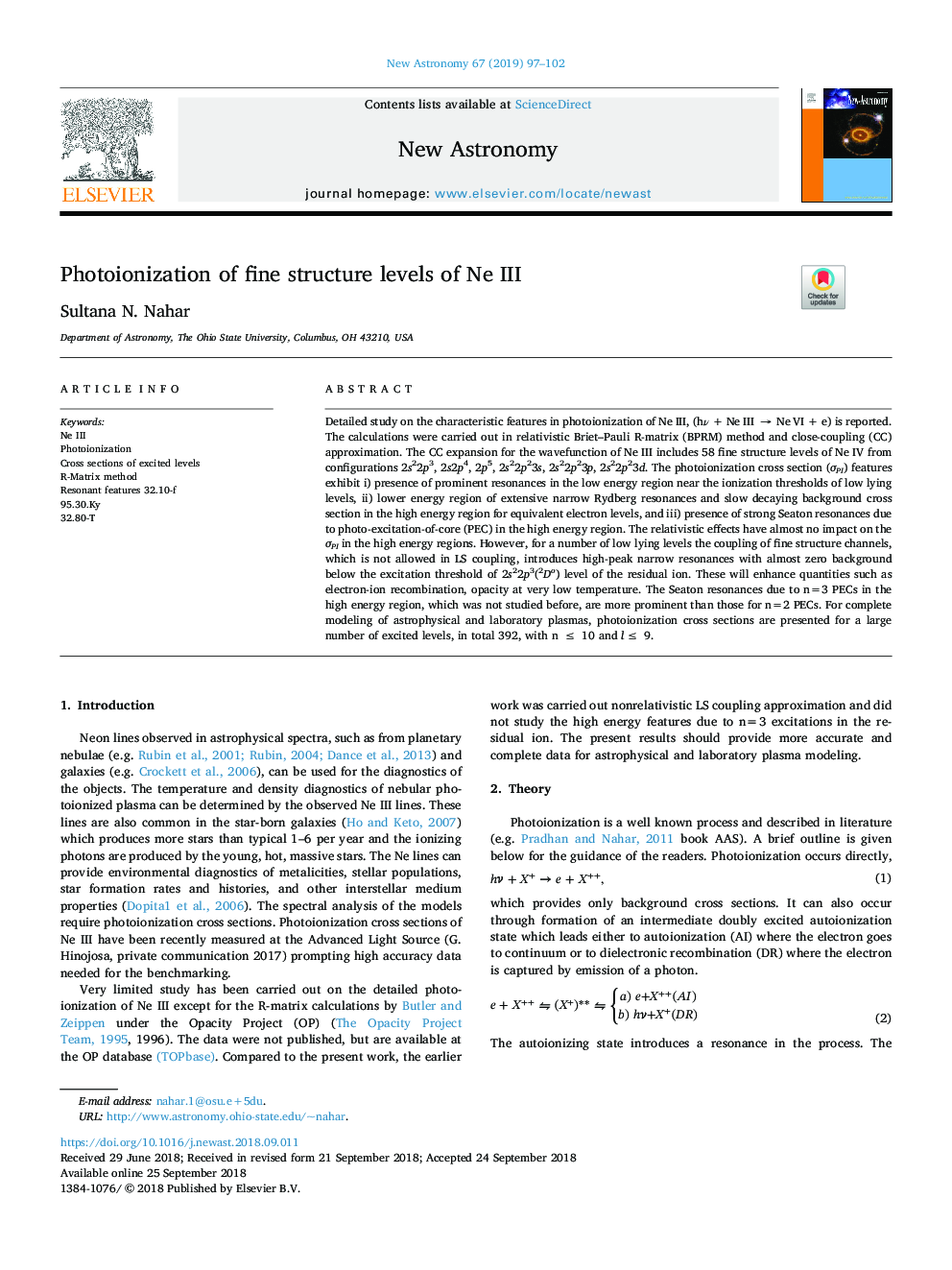| Article ID | Journal | Published Year | Pages | File Type |
|---|---|---|---|---|
| 11029471 | New Astronomy | 2019 | 6 Pages |
Abstract
Detailed study on the characteristic features in photoionization of Ne III, (hν + Ne III â¯â⯠Ne VI + e) is reported. The calculations were carried out in relativistic Briet-Pauli R-matrix (BPRM) method and close-coupling (CC) approximation. The CC expansion for the wavefunction of Ne III includes 58 fine structure levels of Ne IV from configurations 2s22p3, 2s2p4, 2p5, 2s22p23s, 2s22p23p, 2s22p23d. The photoionization cross section (ÏPI) features exhibit i) presence of prominent resonances in the low energy region near the ionization thresholds of low lying levels, ii) lower energy region of extensive narrow Rydberg resonances and slow decaying background cross section in the high energy region for equivalent electron levels, and iii) presence of strong Seaton resonances due to photo-excitation-of-core (PEC) in the high energy region. The relativistic effects have almost no impact on the ÏPI in the high energy regions. However, for a number of low lying levels the coupling of fine structure channels, which is not allowed in LS coupling, introduces high-peak narrow resonances with almost zero background below the excitation threshold of 2s22p3(2Do) level of the residual ion. These will enhance quantities such as electron-ion recombination, opacity at very low temperature. The Seaton resonances due to n=3 PECs in the high energy region, which was not studied before, are more prominent than those for n=2 PECs. For complete modeling of astrophysical and laboratory plasmas, photoionization cross sections are presented for a large number of excited levels, in total 392, with n â¯â¤â¯ 10 and lâ¯â¤â¯ 9.
Related Topics
Physical Sciences and Engineering
Physics and Astronomy
Astronomy and Astrophysics
Authors
Sultana N. Nahar,
